What the built environment does to people: the lack of public spaces and democracy in the district of Los Olivos
[The ideas in this article and observation exercise of Los Olivos could not have been possible without the collaboration of Olimpia Mosteanu, who, as it is always the case, is the one person with whom ideas and observations about the city and its life are constantly discussed and embattled]
Public spaces are essential to city life. Public spaces are places such as plazas, parks, streets lined with things to do, where people can see other people. “Others” are not just family and neighbors, but moreover people one would not normally see in one’s own area of residence, including people from different socioeconomic backgrounds or from areas of the city different from ours. Public spaces are thus central for people to become accustomed to seeing strangers and developing a sense of diversity and civic congeniality. Even more, public spaces give energy to cities.
In 70 years, Lima, Peru, has grown from a small city of 300,000 that was full of public spaces and with a distinct middle-class culture, to a very heterogeneous city of about 10 million. The arrival of migrants from different parts of the country into the city had important consequences and it radically changed life in it. The city of Lima was not ready infrastructurally or culturally for such massive migrations of people; most new Limeños in the 1940s used to be considered radical “others” (peasants from the Andes and the rainforest regions of the country, who were not white, but moreover many times did not even speak the same language). Due to important financial crises from the mid-1970s on, the state had only a minimal role in the urbanization of the new areas of the city. These areas went from being formed as massive shanty-towns to later becoming the most populous districts of the urban sprawl of Lima. In many of these new districts, urbanization was an effort undertaken by immigrant families themselves. Immigrants many times built their homes with their own hands, deciding how streets should be laid out through cooperative efforts, and using their business skills to self-finance basic needs (such as running water and electricity). This culture of mutual cooperation, however, had an unexpected consequence for the way the city grew: the residential centers of these new populous neighborhoods were planned, through these cooperative associations, by residents themselves (and later, by local municipal governments) to favor social cohesion between people that could identify with one-another (family friends, immigrants from the same region of the country, business partners, or even people of the same socioeconomic class), not to invite strangers into one’s own area of the city. Because of this, public spaces in these areas were never meant to be inviting to people outside of local communities to use them. This is a direct consequence of a culture of structural violence and distrust that characterized the late 1980s and 1990s, in the aftermath of the internal civil war and generalized decay of civil society and democratic practices in the city.
Two of the most populous districts of Lima are San Martin de Porres and Los Olivos, north of the historical center of the city. San Martin de Porres is older and it started as a large human settlement in the late 1940s. In 1989, its north-east side (which was not only newer, but also was more economically well-off) became a different district by the decision of its own residents, creating the district of Los Olivos. Throughout the 1990s, Los Olivos became notorious in Lima because its income levels were among the highest of the new populous districts of the city, with much of its population belonging to the medium-high socioeconomic strata of the city, made up by families whose migration processes were successful. The urban development of Los Olivos is also notorious because, unlike San Martin de Porres, its urban planning is dotted with parks and green spaces. However, unlike other modern districts in Lima (where traditional Limeño upper middle and upper classes built their homes), Los Olivos does not have a vibrant public life. Despite the fact that the district is full of restaurants and other businesses on its main avenues (such as Avenida Carlos Izaguirre and Avenida Las Palmeras), the great majority of the urban space of Los Olivos is mostly residential in nature. In the context of its initial development in the late 1980s (a period of economic devastation in the country) most resources were put onto building each family and community’s private space at the expense of a full development of public spaces.
In 2002, during a time of economic boom in the country (a time when Los Olivos had established itself as one of Lima’s most important economic hubs), Lima’s biggest shopping mall was opened on Los Olivos’s eastern border with the lower socioeconomic district of Independencia. Nowadays, Mega Plaza and the newer nearby Plaza Norte are full of people spending their days, shopping, eating, going to the cinema. But private commercial enclosed areas are problematic because they are rigorously policed and their spaces cannot be used freely (for instance, bicycles and skates are forbidden from them, as is organizing public events in them or not looking “appropriate” for being there). There is a large amount of social science literature that accounts for how problematic shopping malls are as the only available social space in North American cities precisely for those reasons (for some examples, see Crawford 1994 and Goss 1999). Also, the homogenization of public spaces can have important political consequences in urban settings where previously the presence of people of different backgrounds was possible (in this article, looking at this possibility without a historical perspective would be speculative, but Harvey [2006] gives an important historical account of how the homogenization of Paris during the second republic set the seeds of its social battles in the second half of the 19th century).
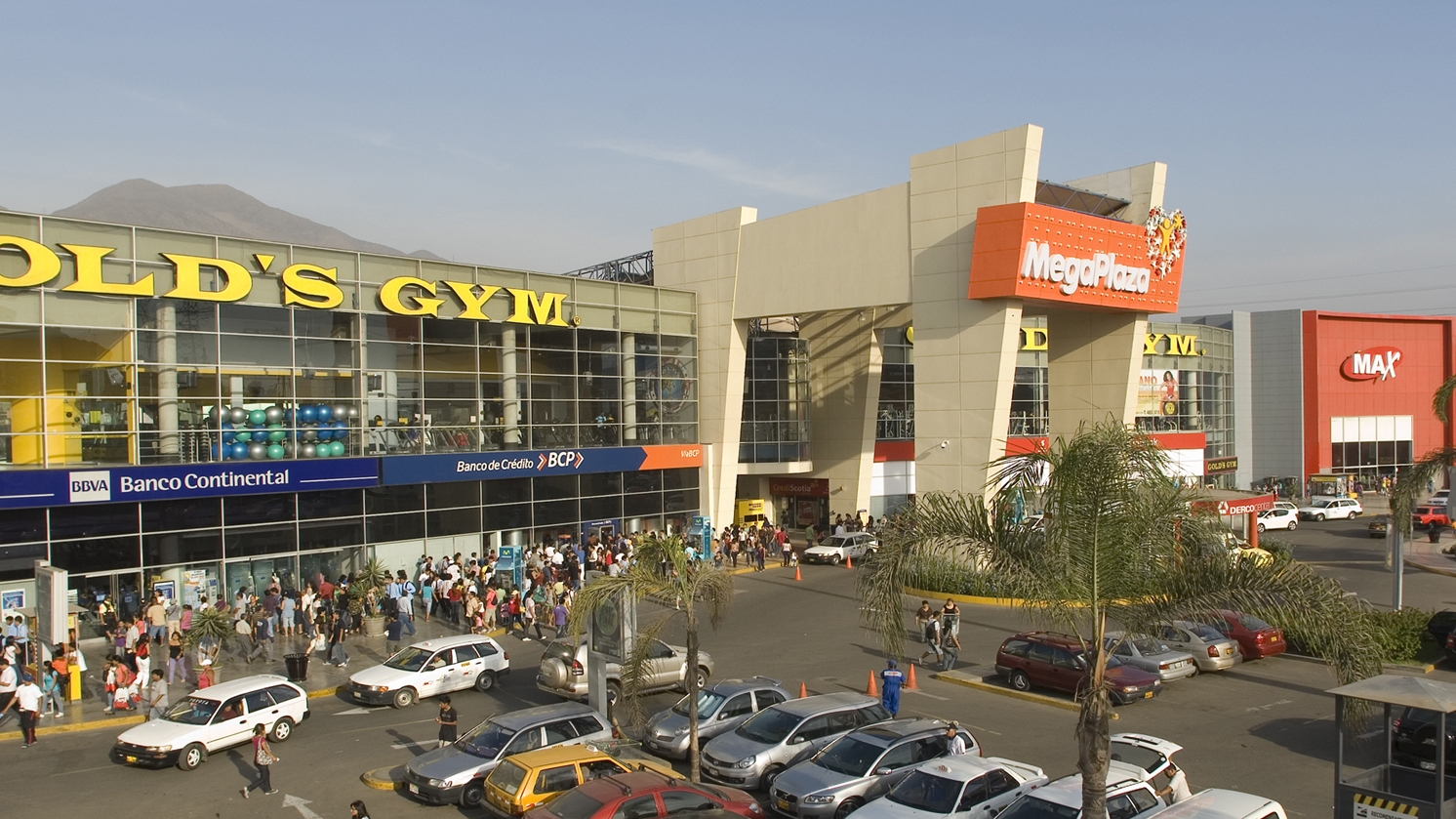

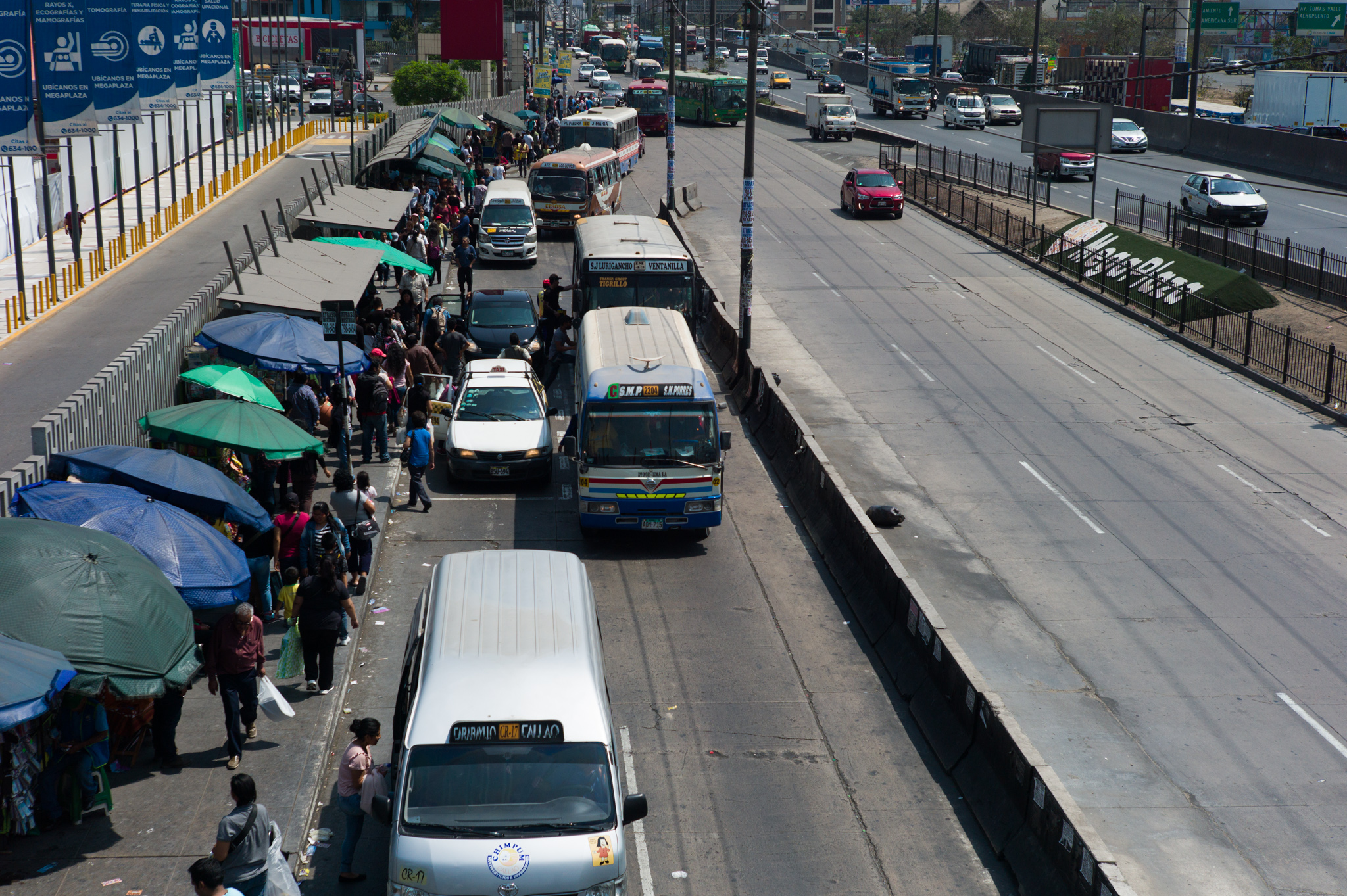
Outside of the intense movement of people in Megaplaza, going for a walk on a Saturday (a day when people usually take pleasure in enjoying the city), I was very surprised at the small number of people on the streets compared to the other big centers of the city: the historical center and Miraflores. What is different in Los Olivos? Among other things, public life is limited, in great part because its numerous parks are not really public spaces. Their planning followed the idea of the park as a monument or as an urban decoration. Thus, most parks in the district (with a couple of important exceptions in the southern part of the district) are fenced off (and gates are closed with locks after 6pm), they have very limited number of benches, and, more importantly, they dotted with signs that read messages such as “do not step on grass,” “do not touch the flower,” “no sports allowed,” “no skaters,” etc. Likewise, green spaces in Los Olivos are monitored by cameras, and there are municipal police (“serenazgo”) patrolling the streets surrounding parks at all times. Most residential streets have gates and private security (municipal police therefore only need to patrol “public areas); thus, parks and big avenues are among the only areas that are fully open to people’s (“others) circulation.
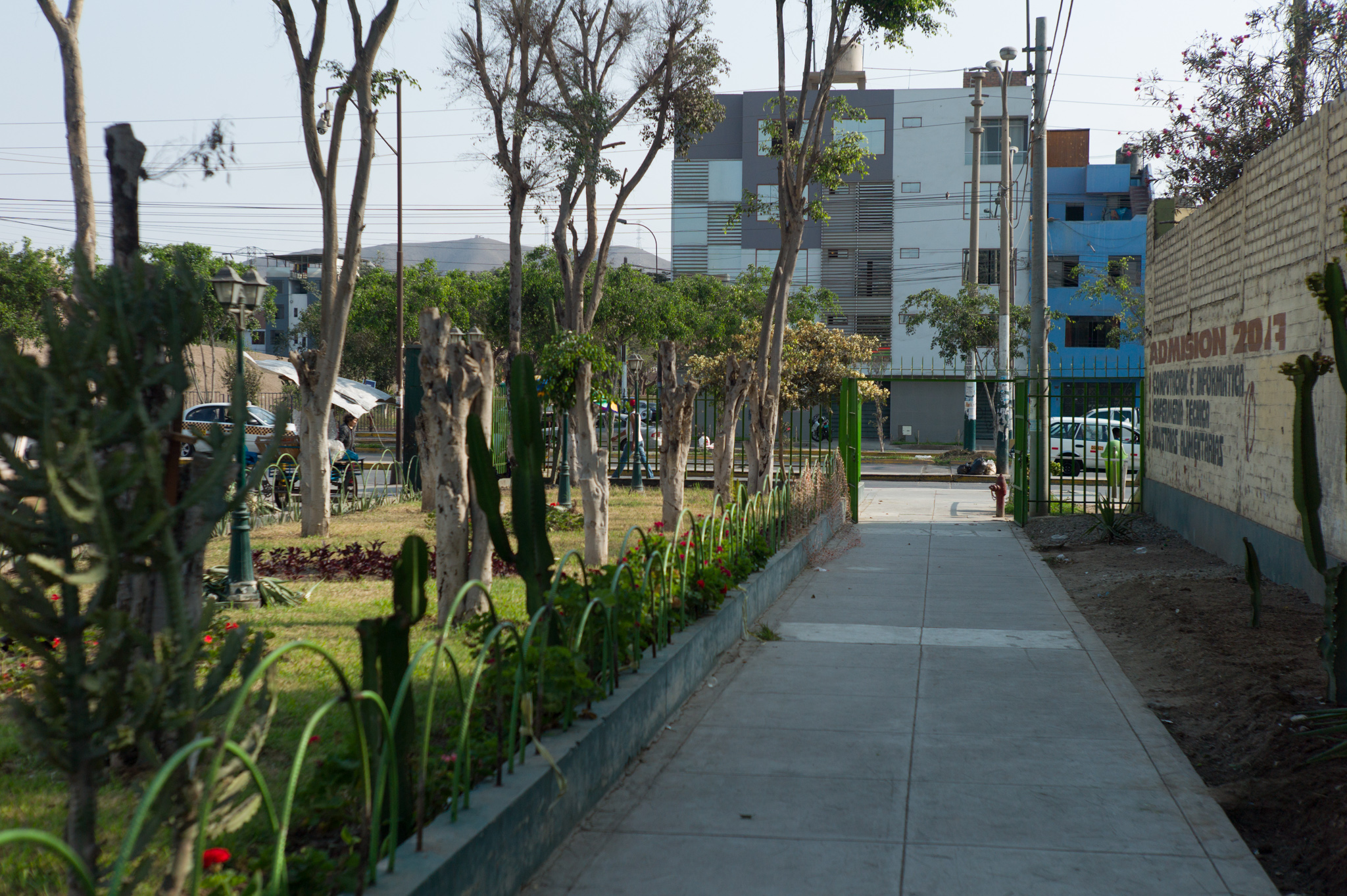
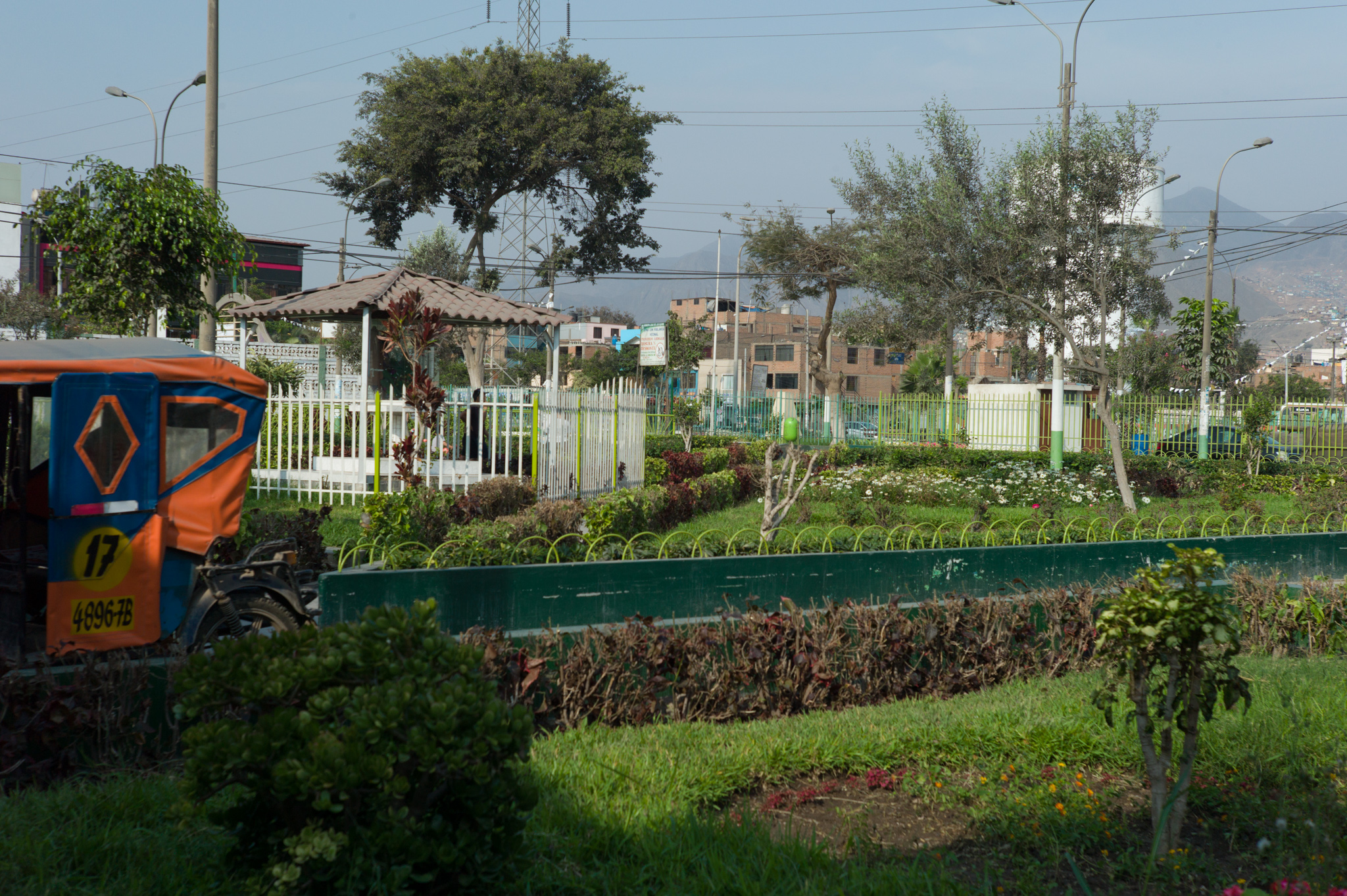
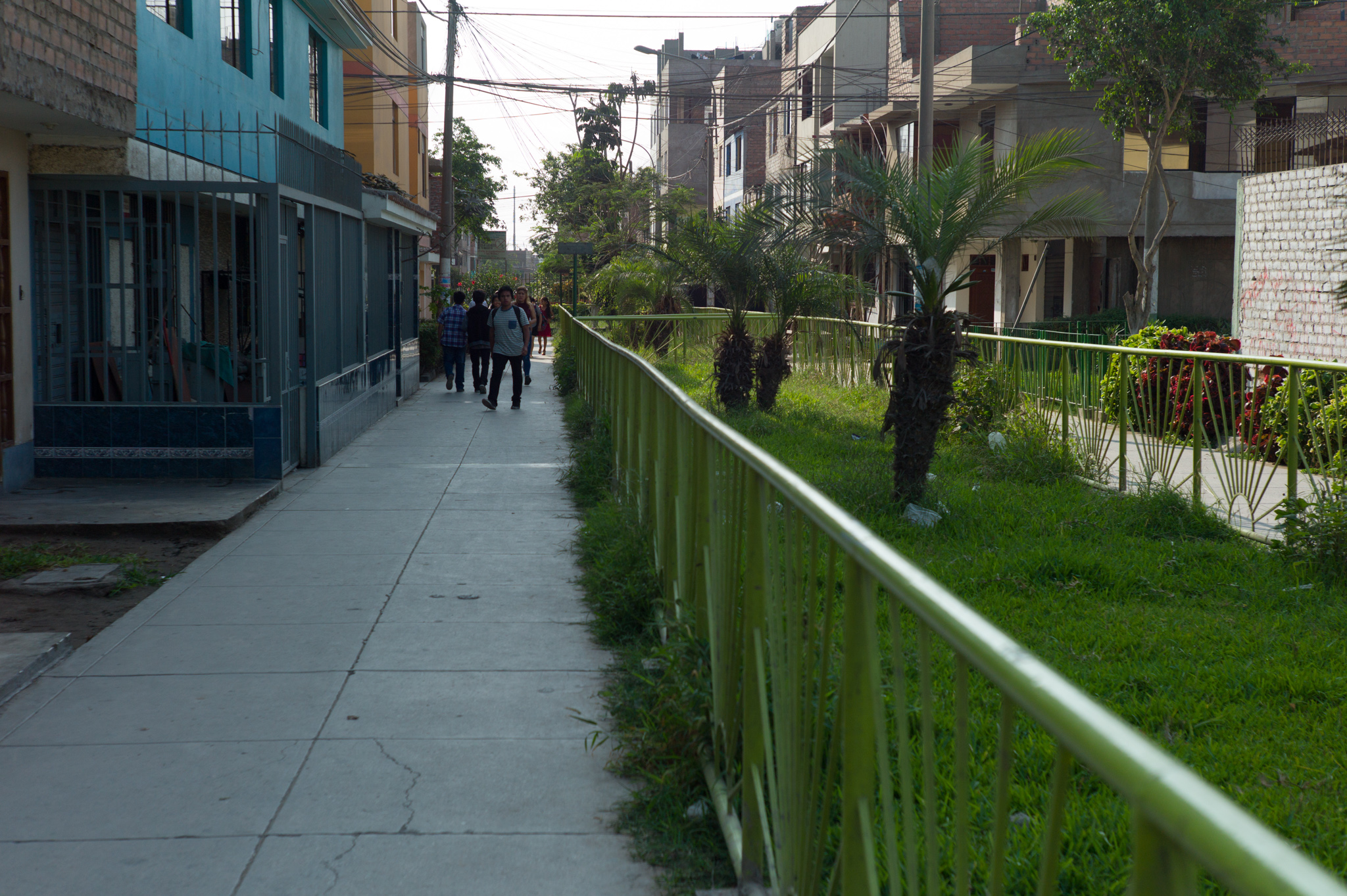
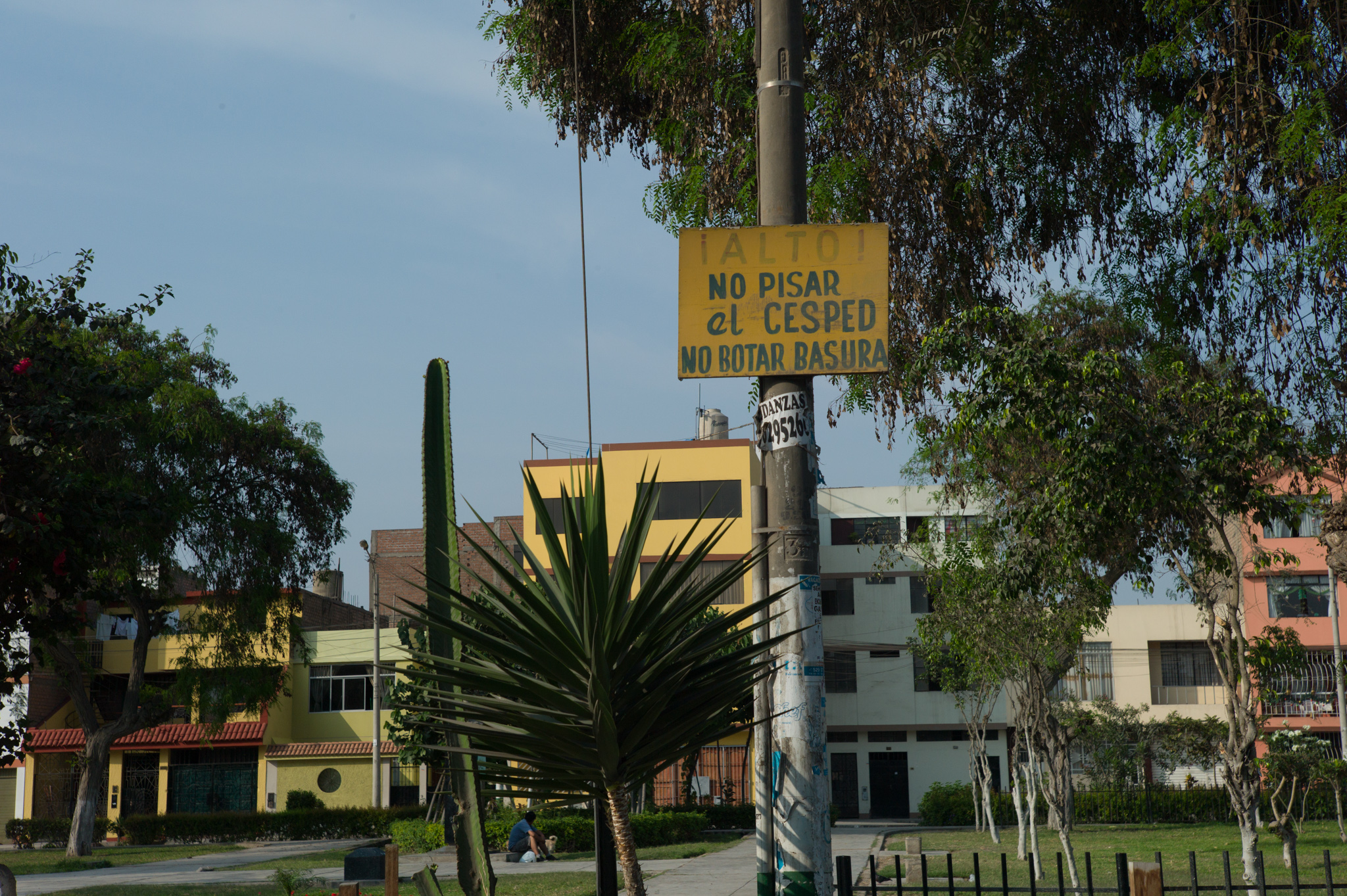
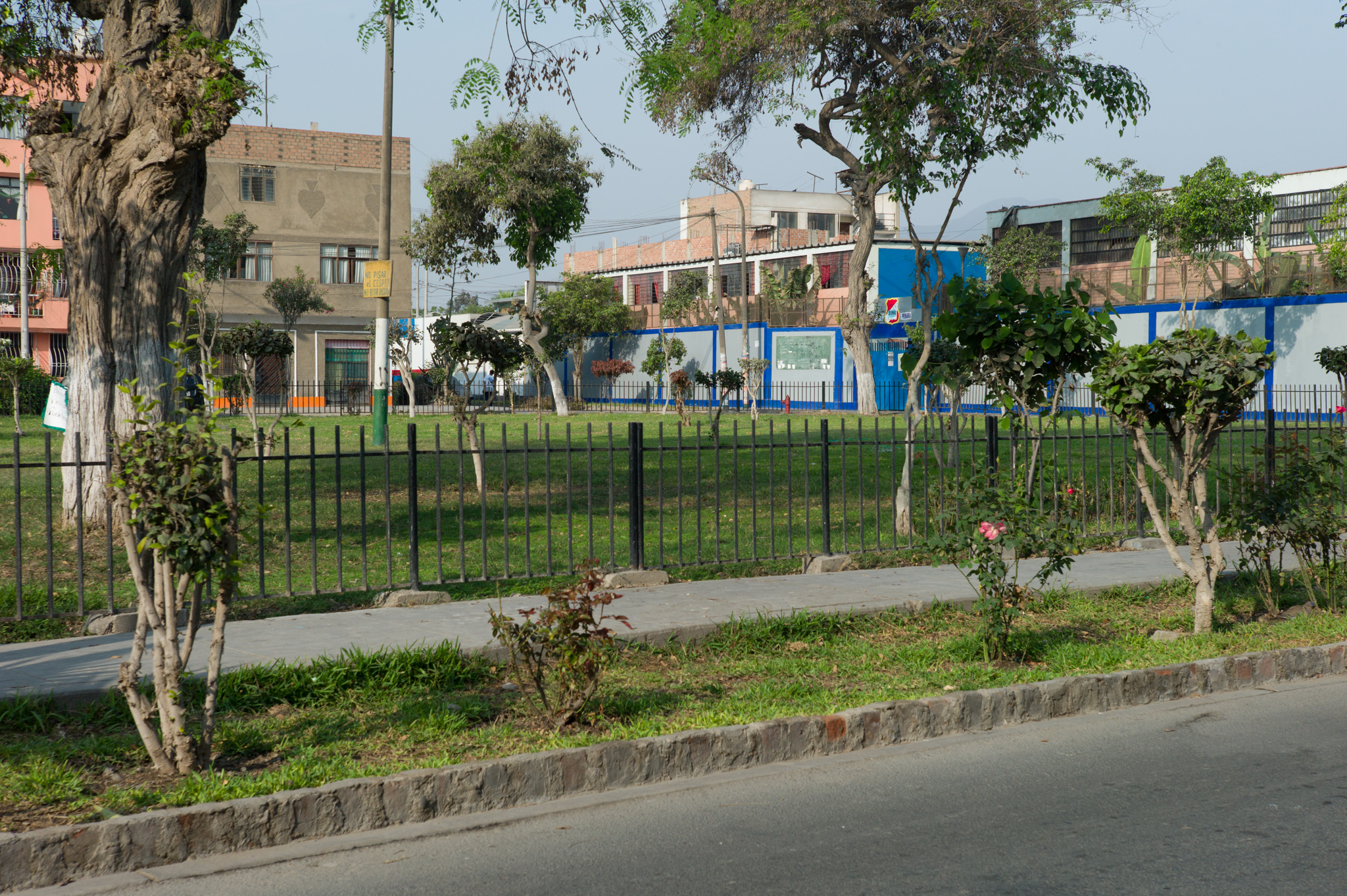
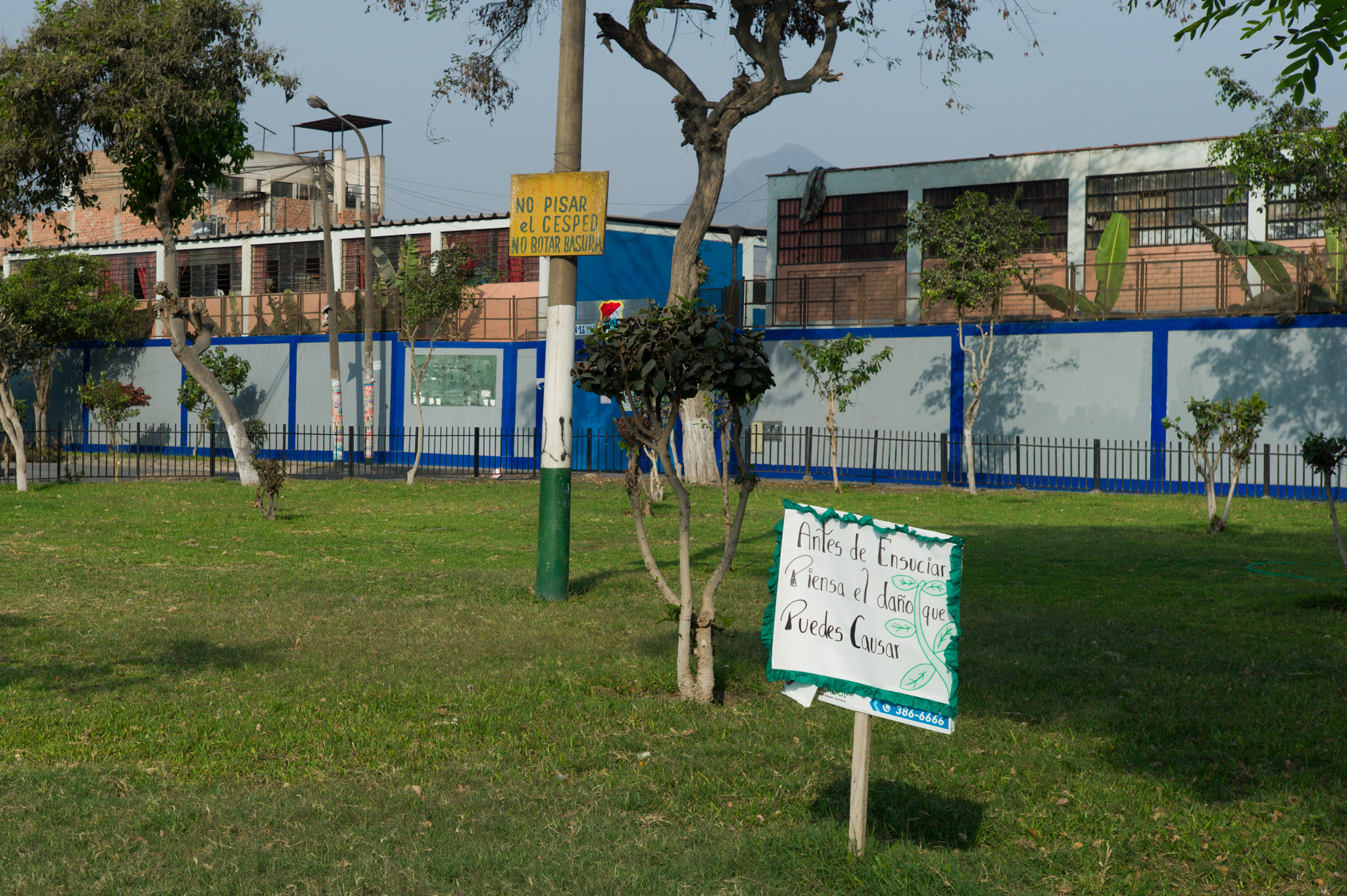
Talking to people in Los Olivos, we were told that the streets are dangerous, particularly the areas outside of each person’s personal residential areas (comprised by the area of the streets that are within the gated streets). In other words, Los Olivos is a heavily monitored neighborhood, with no real public spaces, despite having a rather high socioeconomic level with houses of high value. Security is a problem in the district. In 2017, the number of reported crimes (mostly against property) in Los Olivos currently tied to be the highest of the city (it shares this distinctive recognition with Lima’s other populous district, San Juan de Lurigancho. See INEI 2017). The perception of danger in the district has guided its urban design and the way people lead their daily lives. It is therefore not surprising that “others” (strangers) are seen with a degree of suspicion.
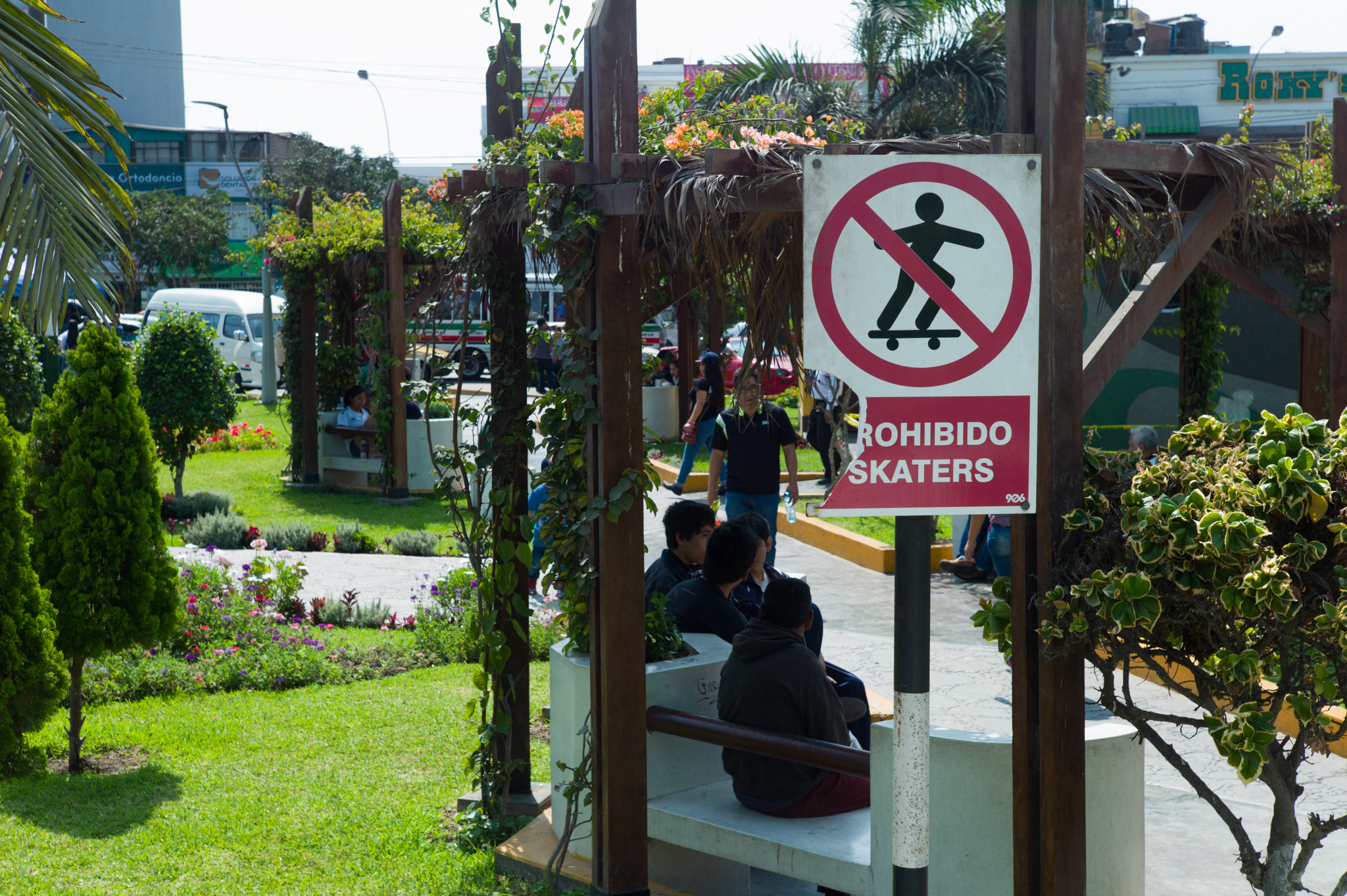
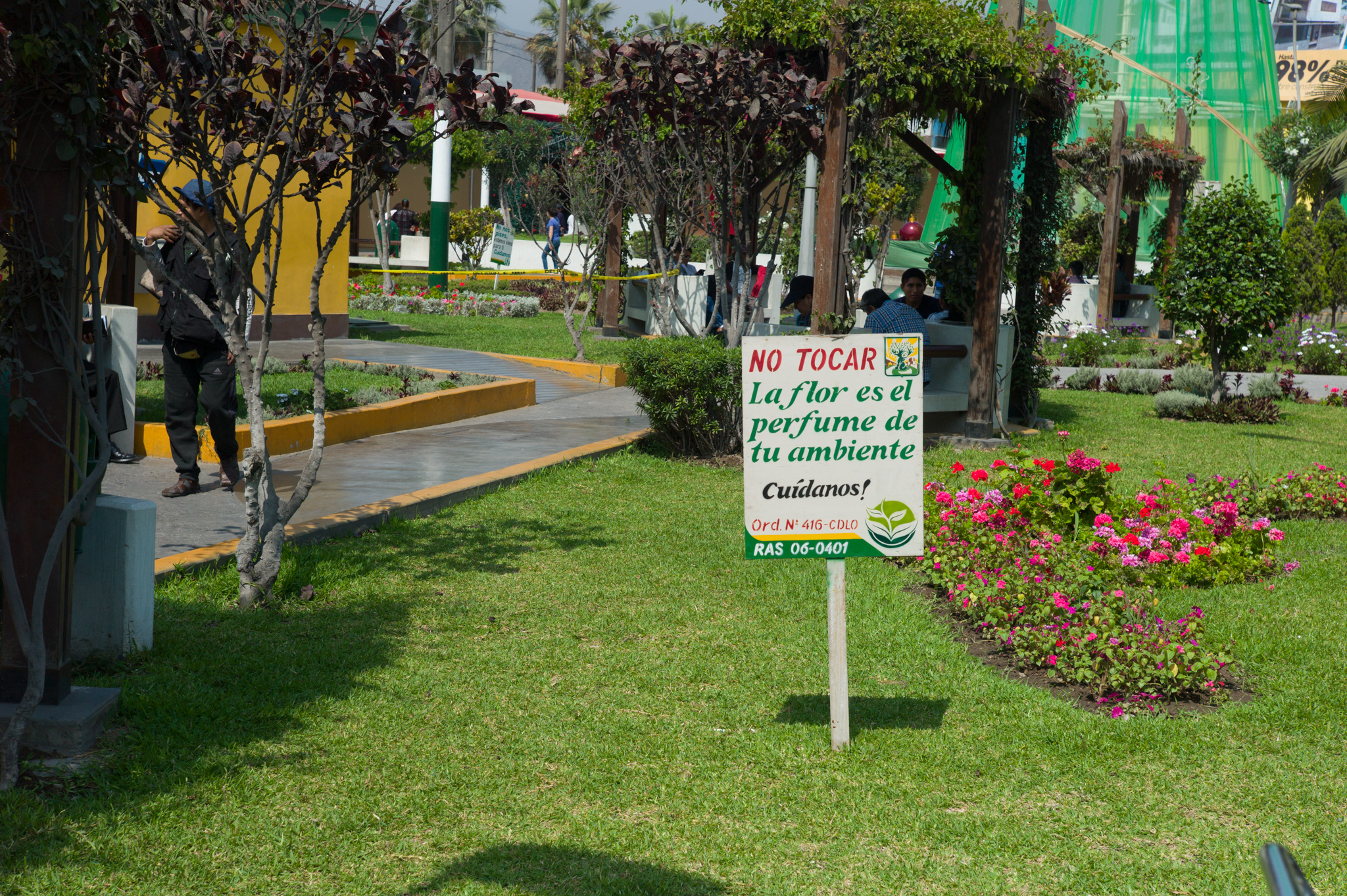
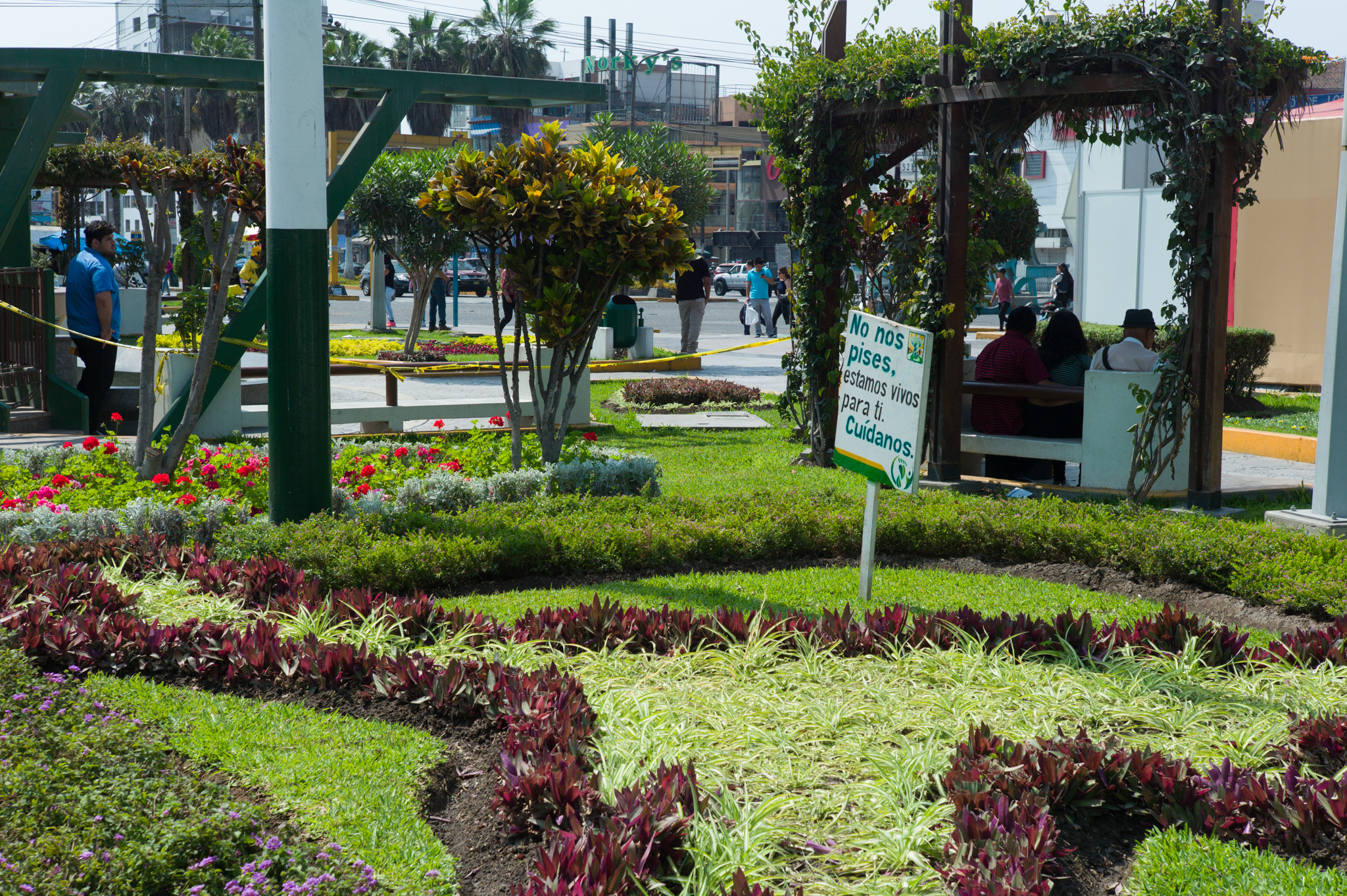
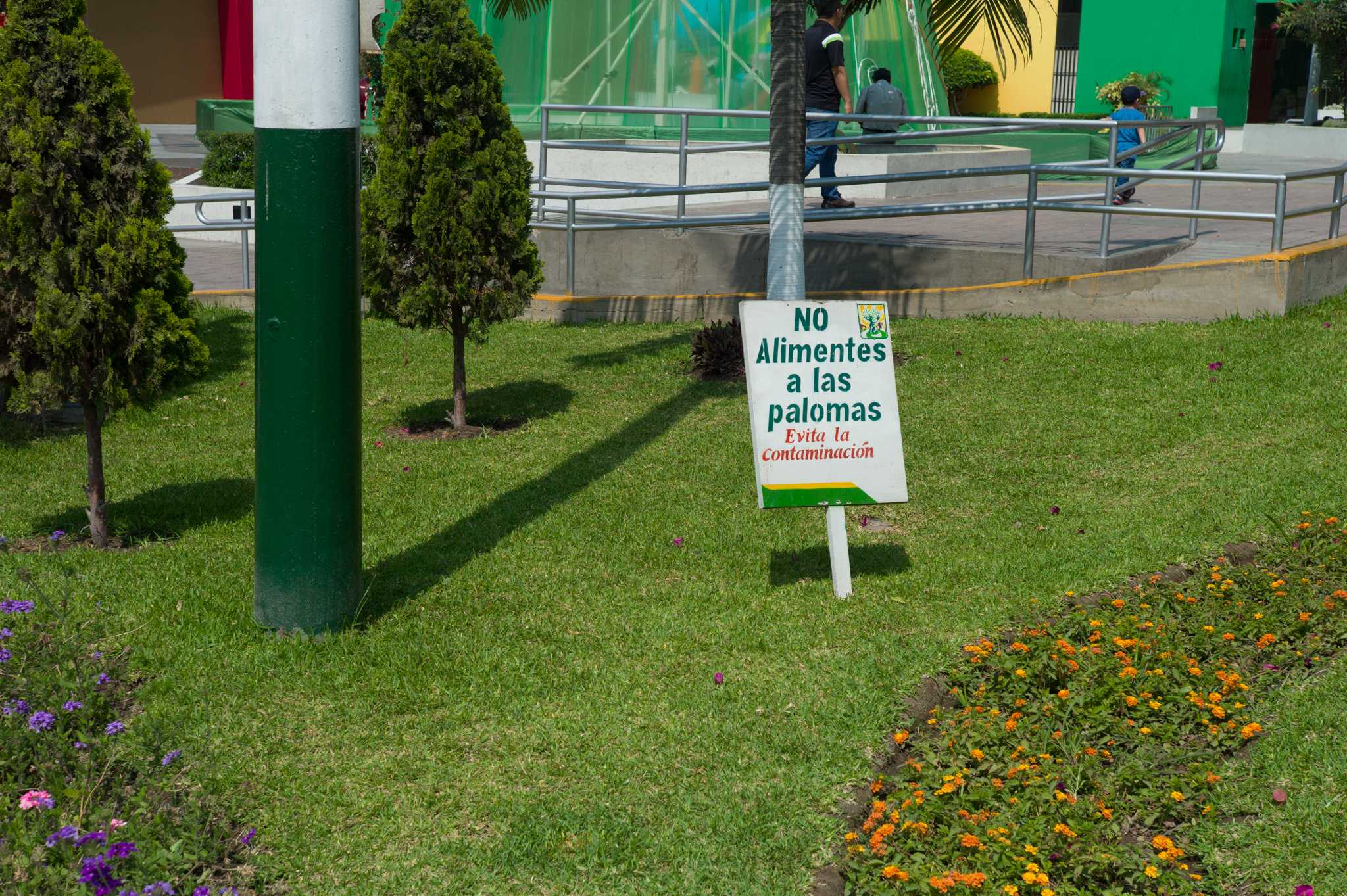
This is precisely the sort of scenario that Jane Jacobs would have criticized, based on her analyses in her famous book “The Death and Life of Great American Cities” (1961), where she claims (against the modernist urban planners of her time) that it is people who make streets great and safe. According to her, a street with no people walking around, where there is not much to do, is more dangerous that one where public life is abundant. Whereas in small towns reputation in a social setting where most people know each other is a strong deterrent against criminal behavior, in cities it is essential that there are “eyes on the street,” be that from residents, store-owners, or anyone else who is there for that matter. Policing is never enough, but having “eyes on the street” does not necessarily entail that people dedicate themselves to look suspiciously at strangers. Looking outside should be a pleasure in itself, as should be people wanting to be there to begin with. For these reasons, life outside (of people’s private homes) is what should be emphasized for there to be more people on the streets, taking care of the safety of the neighborhood. Without public life on the streets, the perception of danger is always increased, no matter the amount of police presence, gates or fences around parks. In Los Olivos, it is clear that the perception of danger and fear are at the center of how people create their own urban identities and live their everyday lives. This is particularly evident in the neighbor’s suspicion of “others,” the political agendas of municipal candidates (who make public safety the primary concern of their electoral campaigns), and the way in which the neighborhood has developed in the last 20 years. This is no mere personal fact, as this sort of essential fear is often at the root of social distrust in one another. In other words, here it is evident to see a feedback loop of fear, between people’s fear and the urban surroundings that reinforce those feelings.
It is this mutual distrust that is at the base of poor democracies. Democracy is a very loaded word, but here it suffices to understand that, at its most basic, democratic practices are based on the possibility of people talking to each other as equals, despite their (objective or imagined) differences. Democracy is therefore based on a culture of mutual recognition and openness to the possibility of dialogue, and therefore of acknowledging the “other.” Following Jane Jacob’s argument, then, one can say that urban danger only takes place when democratic practices no longer take place. If local dwellers are scared enough about crime surrounding them to simply close their streets and “public” spaces to strangers, then that is a good indicator that local democracies will have succumbed to fear.
What the district of Los Olivos is facing is a very complex problem that would seemingly require monumental social and cultural (and political!) changes, but fortunately, there are ways to break this vicious circle; and public spaces could be at the center of change. Perhaps one could first make parks be really public by doing away with the idea that parks are just ornamental and decorative things. Parks could be opened to people, removing the fences that are not useful anyway (the presence of fences in parks has not lowered the number of crimes reported in the district, in fact, statistics for the last ten years show that crime has been growing).
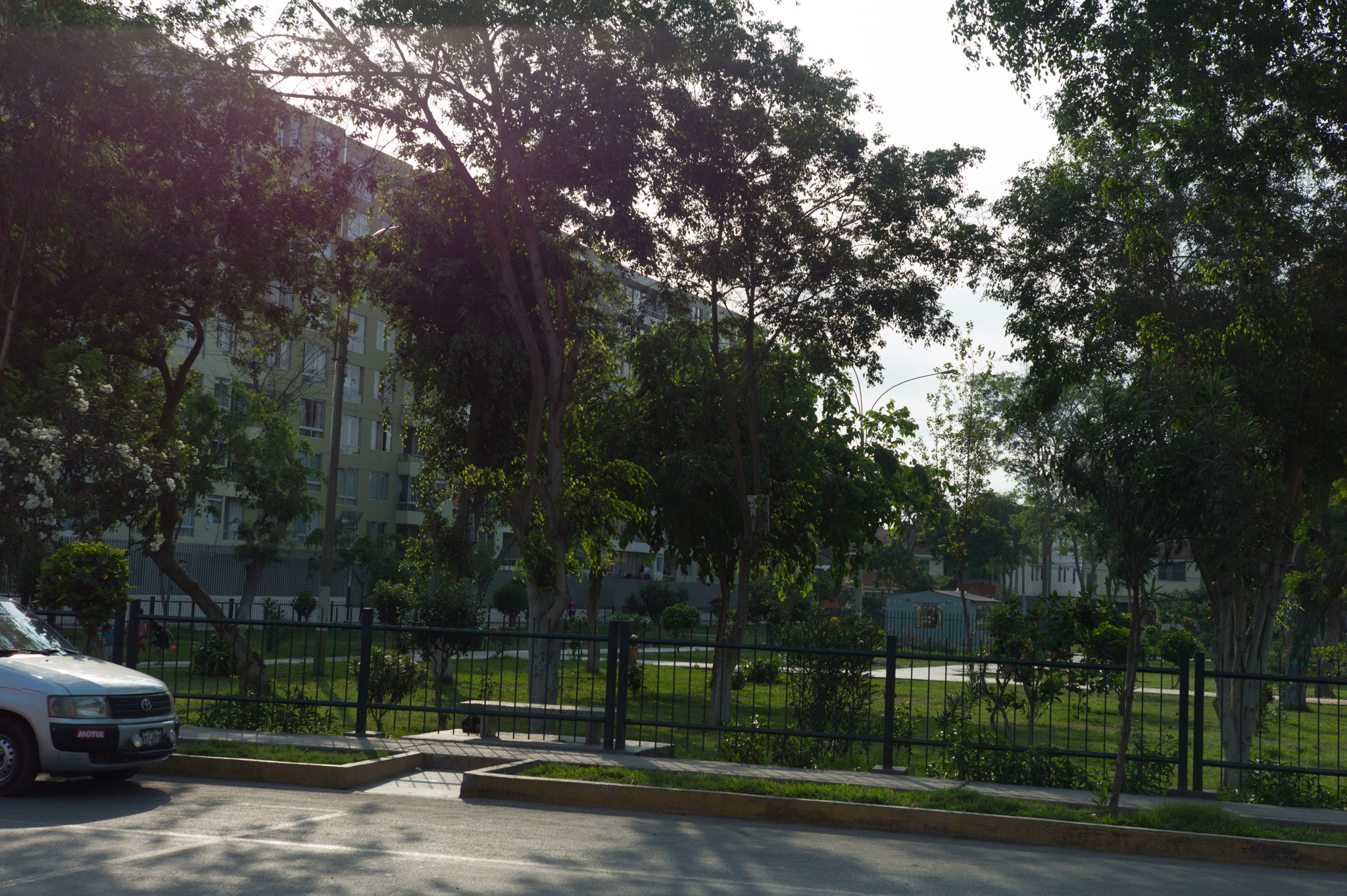
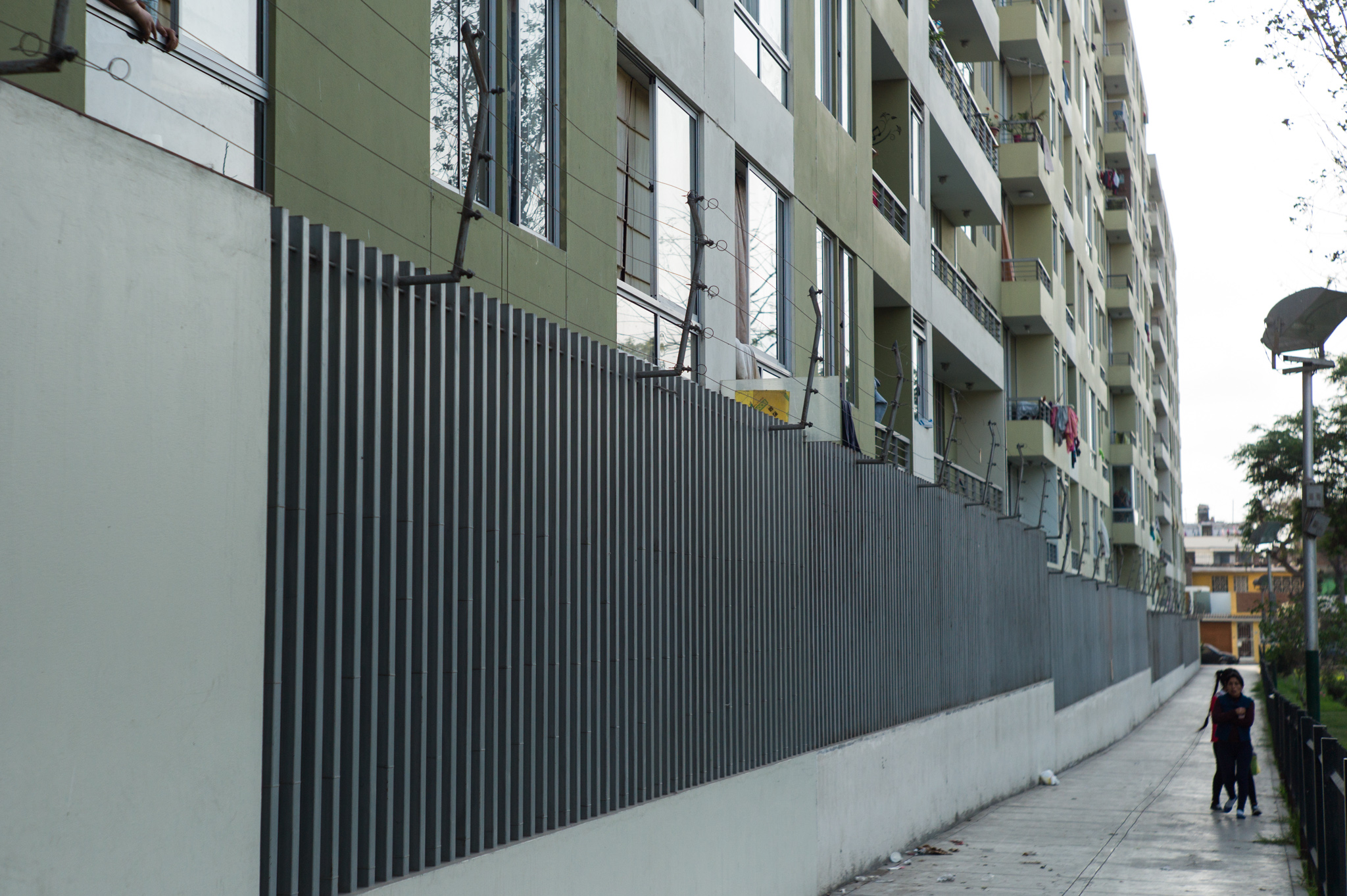
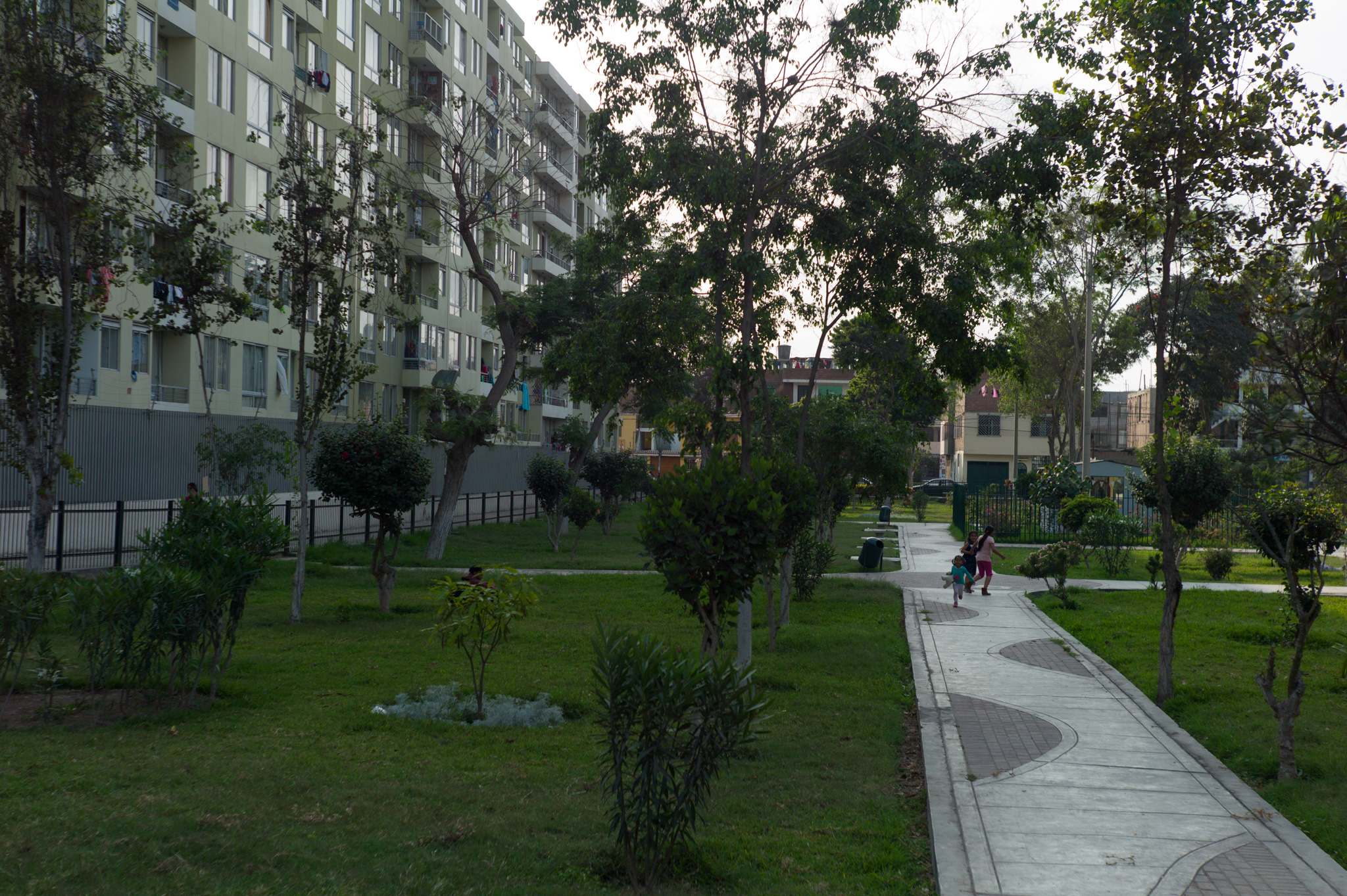
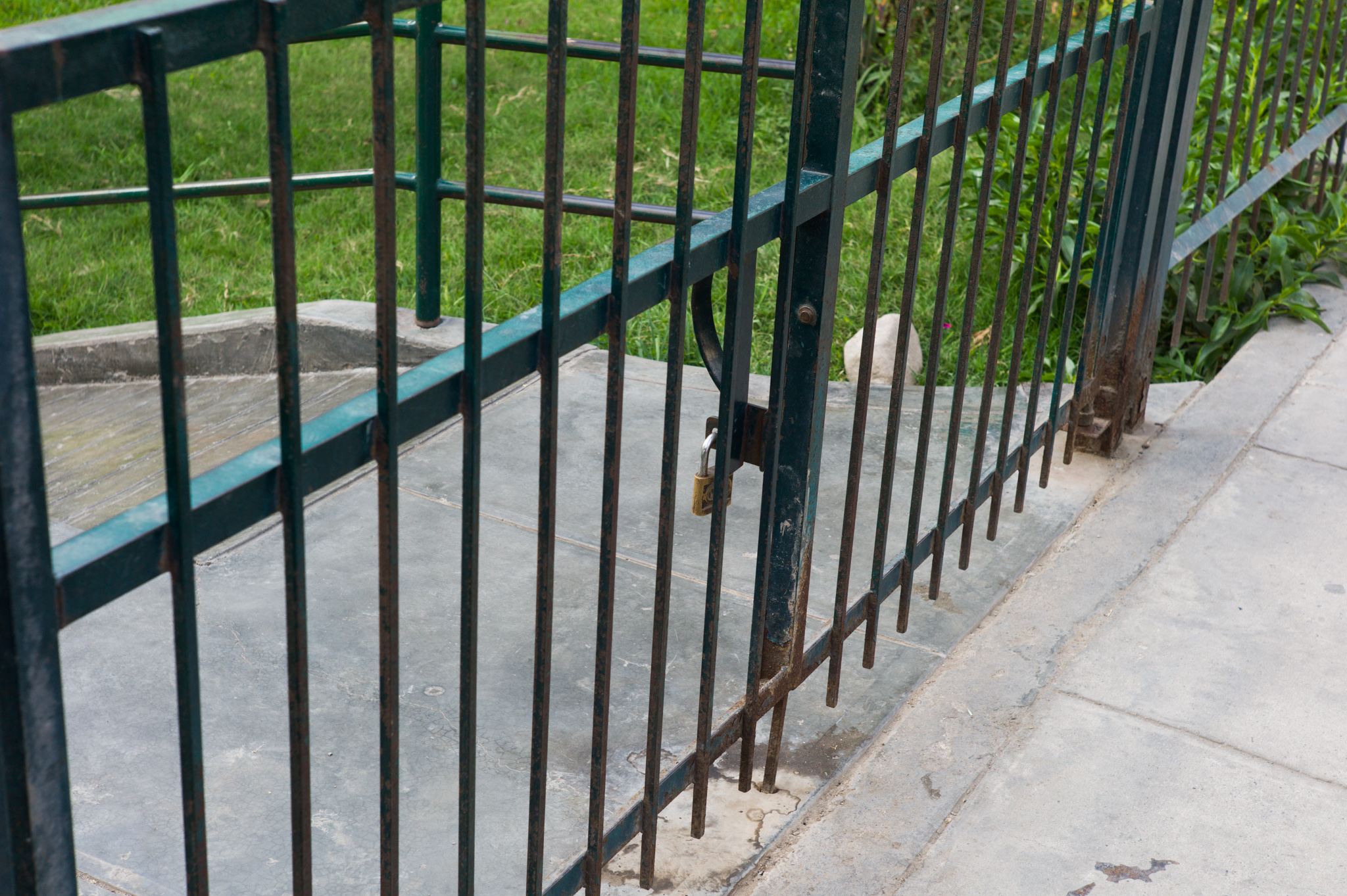
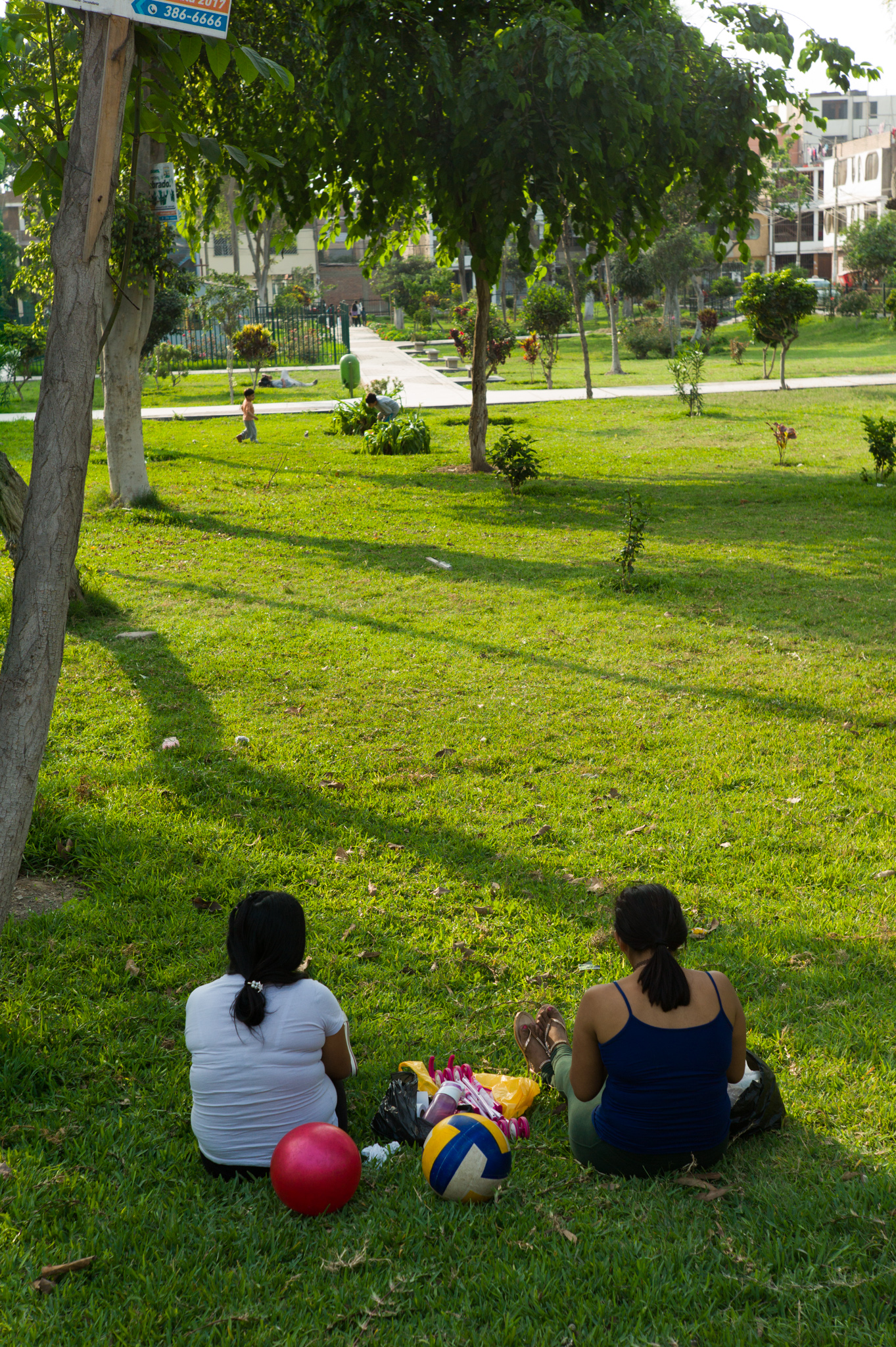
Also, during my observation of said parks, I noticed that parks with benches where people could sit always had people using them, making it clear that they need more places for people to sit. But more importantly, this also shows that parks need to be used for something. Therefore, green spaces should not be restricted to people wanting to use them for sports, eating, sitting, or just enjoying the sun. There could be programs in place that make use of parks in different ways, such as outdoor activities, classes or almost anything else that can be done outdoors that would be of interest to the districts population. Likewise, the strict policing of them, and the very evident presence of law enforcement, should be reduced or at least made non-threatening.
Often, I have heard that people in Lima say that Limeños prefer to be indoors and be very private about their lives. This is not difficult to believe, especially since there are good historical reasons for that (something that I investigated in depth in my doctoral dissertation). However, the fact that people from all over Lima (including Los Olivos) flock to the two big areas with large public spaces where there is much public life (in the districts of Miraflores and Lima's historical center) proves that this is simply not true. That this happens despite how far away these areas are from their own homes (at least an hour away by public transportation) only emphasizes people’s desire to enjoy public life. Limeños like and appreciate public life in the city as much as anywhere else in the world. Furthermore, in recent years more activities in public spaces (such as the main plaza of the district of Pueblo Libre, or the cultural revitalization of the Parque de la Reserva) have significantly encouraged public life in their respective local communities. In other words, the point that Lima is a city without a culture of public spaces and public life is moot. Even in Los Olivos, there are some unexpected green spaces that are often used intensely, for instance the less policed and restricted spaces between broad avenues (like that between the two lanes of Avenida Universitaria, pictured below). This is a testament to the fact that people need public spaces where they can do what they want and see “others,” even if they don’t actually talk to them. Co-presence is important not only for democracy, but moreover for people’s sense of freedom.
Good urban design depends very much on listening to people’s voices and what they have to say about what they want of their cities and streets. I imagine that these changes to the urban landscape, and inviting “others” into their neighborhoods, would probably generate many complaints from people in Los Olivos. However, local authorities, urban researchers, and urban planners should remember that what originated this privatization of public space to begin with was people’s desire for safety. And that is precisely what is at the center of a strategy of revitalization of local public areas.
A culture of fear generates architecture and urban design of fear, but public spaces can be at the center of a transformation that is not only the built space: moreover, it is about culture and people’s everyday lives. Quality of life can be improved by paying close attention not only to what people say, but also by analyzing how people interact with their urban surroundings.
References:
Crawford, Margaret (1994) The World In A Shopping Mall. In: Variations On A Theme Park: The New American City and the End of Public Space. Sorkin, Michael Ed. Hill and Wang: New York
Goss, Jon (1999) Once-Upon-a-Time in The Commodity World: An Unofficial Guide to Mall of America. Annals of the Association of American Geographers, 89(1), p. 45–75
Harvey, David (2006) The Political Economy of Public Space. IN: The Politics of Public Space. Low, S. and Smith, N Eds. Routledge: NY
INEI (2017) Informe Técnico No. 5: Estadísticas de Seguridad Ciudadana, Marzo-Agosto2017. https://www.inei.gob.pe/media/MenuRecursivo/boletines/05-informe-tecnico-n05_estadisticas-seguridad-ciudadana-mar-ago2017.pdf
Jacobs, Jane (1961) The Death and Life of Great American Cities. Random House: Toronto
If you like what you read and are interested in my analyses, follow me on Twitter and Facebook.